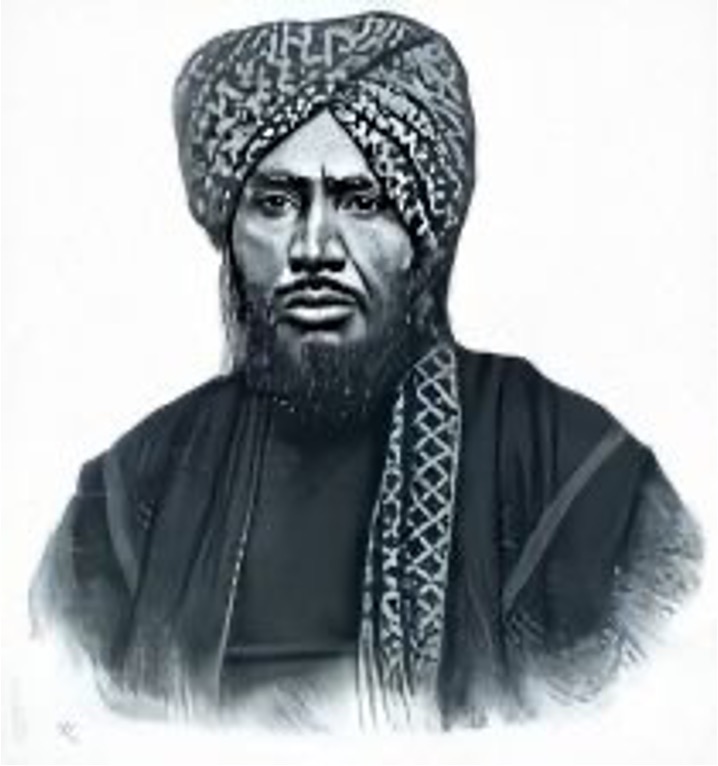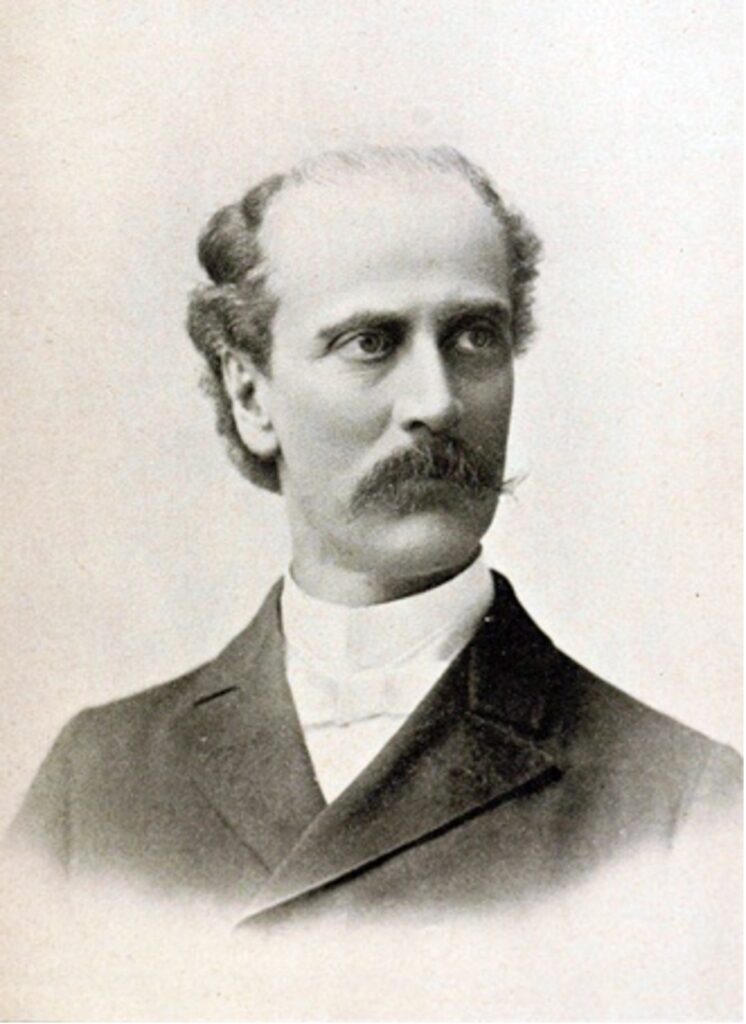The end of the 19th century was a dark and painful period for Muslims. Six hundred years of Mughal rule came to an official end in 1857 when the last Mughal monarch Bahādur Shah II (reigned 1837–57) was exiled to Yangon, Myanmar (Rangoon, Burma) by the British after his involvement with the Indian Mutiny of 1857–58.[1]
The Ottoman Empire was in decline and the major global powers were all Western countries. Muslim influence on the world stage had diminished almost entirely. Faith and righteous deeds which had been instrumental in the spread of Islam had now almost diminished. Islam was left in name only. Anti-Islamic movements were burgeoning with the aim of humiliating the name of Islam and ridding the world of its greatness.
In India, Hindu religious and political leaders were perpetuating false, demeaning accusations about the Holy Prophetsa and the Holy Qur’an, while Christian missionaries had started their preaching campaigns against Islam. Islam was being attacked constantly and the Muslims of that time were not able to defend Islam, as most were devoid of spiritual, intellectual, and divine guidance. Their understanding and interpretation of some of the key elements of Islam, including the concept of Jihad, the appearance of the Mahdi and the reappearance of the Prophet Jesusas had become corrupted and indefensible. Some were even challenging the integrity of the Quran by suggesting that certain Quranic verses had been abrogated.
The exposition of the doctrine of Jihad taught by the religious clergy at the time was entirely contradictory to the teachings of the Holy Quran and the authentic traditions of the Holy Prophetsa. India, which had previously been termed ‘Darul Islam’ the ‘abode of Peace’ was now termed by some as ‘Darul Harb’, ‘the abode of war’. For some Muslim clerics, any association with the British Raj was considered to be a threat to Islam and to be avoided at all cost.[2]
These false concepts of Jihad were widespread and culminated in the Mutiny of 1857 mentioned earlier. The uprising, which was considered a jihad by some of the Muslims, had no basis in Islam. Muslims were free to practise and preach their faith and no religious restrictions had been placed on them by the British. However, the uprising further marginalised the Muslims in the eyes of their rulers and in much of the wider Indian society they were viewed as untrustworthy.
Remarkably, this tragic decline had been prophesied by the Holy Prophetsa of Islam.
“A time comes on (our) people when Islam will be left merely in its name. Nothing of the Quran will remain except its letters. Their mosques will be full of people yet will be empty of all righteousness. Their ulema (scholars) will be the worst creatures under the firmament of the heavens. From them will emerge discordance and to them shall it return.”[3]
This decline of Islam did not merely refer to kingship or authority being lost, rather it was primarily about the dire moral and spiritual state of Muslims. According to the word of God, the temporal power held by the Muslims was secondary in nature and was based on the outcome of their deeds and would last as long as they remained righteous in the eyes of God.[4]
Common Interest of the Church and the State
The distorted understanding and the interpretation of the original Islamic teaching by the Muslims clergy resulted in the conversion of hundreds of thousands of Muslims to Christianity.
The interest of the British Government in India is not hidden to anyone. It was apparent from their lectures and meetings that the conversion of entire India to Christianity was their ultimate goal as this they thought to be the only means to confirm the loyalty of its citizens and give further strength to the empire. For Instance, Sir Charles Wood, the minister of State for India declared that the acceptance of the Christian faith was a “bond of union with England and an additional source of strength to the empire” Similarly, Sir John Lawrence, the Viceroy and Governor-General of India attributed the mutiny of 1857 to their own ‘timidity as a Christian nation, in matter of religion’. He added ‘Nothing more easily will conduce to the strength of our power in India than the spread of Christianity’. Sir Herbert Edwards, Major General and later vice president of the Christian Missionary Society, added that the mutiny was “caused not by attempts to disseminate Christianity, but by our keeping back Christianity from the people.”[5]
Thus, the great support accorded by the government officials aided the development of missionary work and subsequently the Christian conversion in India.[6] Charles Henry Robinson writes:
“This development of missionary work was greatly aided by the whole-hearted support accorded by some of the officials who were responsible for the government of the north-west. Amongst these were Sir John Lawrence (Viceroy, 1864-69), Sir Robert Montgomery and Sir Donald M’Leod, Lieutenant-Governors of the Punjab; Sir Herbert Edwardes, General Reynell Taylor, and Sir Bartle Frere, Governor of Bombay…. they made no secret of their personal faith, and contributed largely out of their private incomes towards the establishment of new mission stations, especially those which were supported and controlled by the C.M.S.”[7]
The first attempt to list the number of Christians associated with Anglican and Protestant missionary communities in India was made in 1851. In 1851, there were 91,092 Christians in 267 congregations.[8] After the mutiny of 1857 a great expansion of missionary effort was witnessed which was greatly aided and whole heartedly funded by government officials. According to the subsequent Indian Census reports, in the year 1881 the Christian population increased to 1,862,517[9] and the following census of 1891 to 2,036,590[10]. During the decade 1901-11, Christians in India increased from 2,664,313 to 3,574,770 that is, 34.2 per cent increase, or five times more when compared to 7.1 percent increase in the entire Indian population.[11]
Dr Imad-ud-din, a Christian preacher (formerly a Muslim) in the course of a paper sent to be read at the religious conference held at Chicago, wrote: “There was a time when the conversion of a Mohammedan to Christianity was looked on as a wonder. Now they have come and are coming in their thousands.” At the end of his paper, he appended a list of 117 converts from Islam to Christianity who at that time were occupying influential positions in the State or in the Church in India.[12]
This was a time when Christian Missionaries were boasting about the supremacy of their faith and predicting the conversion of entire world to Christianity. John Henry Barrows an American clergyman known as the architect of the Parliament of Religions, also moderated the event in 1893. During his tour to India, he delivered many lectures, in one of his lectures he stated:
“I might sketch the movement in Mussulman lands, which has touched with the radiance of the Cross the Lebanon and Persian mountains, as well as the waters of the Bosporus, and which is the sure harbinger of the day when Cairo and Damascus and Teheran shall be the servants of Jesus, and when even the solitudes of Arabia shall be pierced, and Christ, in the person of His disciples, shall enter the Kaaba of Mecca, and the whole truth shall at last be there spoken, “This is eternal life that they might know thee, the only true God, and Jesus Christ whom thou has sent.”[13]
Similarly, Charles Henry Robinson in his History of Christian Missions, after quoting latest Indian Census Report stated:
“Should the increase which has been taking place during the last 30 years be maintained, in 50 years’ time the Christians will number 1 in 21 ·of the population, in 100 years they will number 1 in 5, and in 160 years the whole population of India will be Christian.”[14]
Interestingly the substantial amount of these conversions came from the Punjab, Robinson writes:
“The most striking increase has been in the Punjab, where the rate has been 333 per cent… which have resulted from the work of the American Presbyterian and C.M.S. missions.”[15]
There are numerous other references that could be quoted on the subject, yet the above given references should suffice in understanding the zealous effort from the Christian mission and the dire and vulnerable state of the Muslim population in India. Their hopelessness only depicted moral and spiritual decline as prophesized by the Holy Prophetsa. An Urdu poet and writer of the 19th century Altaf Hussain Hali poignantly described the state of the Muslims at the time in a poem entitled “Musadas-e-Hali” or “The Flow and Ebb of Islam”:
“Precisely this is the condition in the world of that community,
whose ship has entered the whirlpool and is surrounded by it.
The shore is far away, and a storm is raging. At every moment there is the apprehension that it is just about to sink. But the people in the boat do not even turn over, as they lie asleep and unconscious.”[16]
“Neither their wealth remained intact, nor their prestige.
Their fortune and prosperity forsook them.
Sciences and arts took leave of them one by one.
All their virtues were destroyed by degrees.
Neither religion nor Islam was left,
Only the name of Islam was left.”[17]
However just as night is followed by the day, so too had the Holy Prophetsa given the glad tidings of the coming of a Promised Reformer after the long period of darkness which had befallen Islam. The rejuvenation of Islam, destined by God and foretold by the messenger of Islamsa was to be at the hands of the Promised Messiahas and the Mahdi.
Allah the Almighty states:
هُوَ الَّذِيْۤ اَرْسَلَ رَسُوْلَهٗ بِالْهُدٰى وَ دِيْنِ الْحَقِّ لِيُظْهِرَهٗ عَلَى الدِّيْنِ كُلِّهٖ
“He it is Who has sent His Messenger with the guidance and the Religion of truth, that He may cause it to prevail over all religions”[18]
The renowned exegete Muhammad Ibn Jarir Al-Tabari in the 9th century commenting on the above verse stated that this dominance would occur upon the arrival of the Promised Messiahas.[19] The Holy Prophetsa had also prophesied that a divinely guided Caliphate on the precepts of Prophethood would be established. This prophecy also clarified the issue of whether the Messiah would be a prophet or not. The Prophethood of the Promised Messiahas is a subservient Prophethood, an incumbent receiving revelation and having communion with God due to complete submission and love for the Seal of the Prophet Muhammadsa. This prophecy was fulfilled in the person of Hazrat Mirza Ghulam Ahmadas.
It is reported by Hazrat Huzaifara that the Messenger of Allahsa said:
“Prophethood shall remain amongst you for as long as Allah wills. He will then cause it to end. Then a Khilafat will be established in the precepts of Prophethood which will last for as long as Allah wills. He will then cause it to end. Oppressive kinghood will follow [which will inflict great pain and misery on its subjects]. Its rule will last for as long as Allah wills. He will then cause it to end. After this, tyrannical monarchies will follow. Their rule will last for as long as Allah wills. Allah will then cause it to end. Khilafat will then be re-established in the precepts of Prophethood. Thereafter, the Holy Prophet(saw) became silent [and added no more comments”[20].
Interestingly, the year 1835 when the Christian Missionaries openly declared their plans to spread Christianity throughout India, was also the year of the birth of Hazrat Mirza Ghulam Ahmad, the Promised Messiahas. The Promised Messiahas was born on 13th February 1835, and on 25th May 1835, the first missionary to be sent by the Free Church of Scotland, Rev. Alexander Duff, addressed the Free Church of Scotland’s General Assembly. He began describing the situation of India as the capital of Satan’s empire.[21]
It was a true blessing of Allah that the reformer was sent to the same nation where the adversaries of Islam were most rampant. In the year that the British Missionaries openly declared their plans to diminish Islam, God had destined for the Messiah to champion and defend Islam. Not only is the time of the advent of the Promised Messiahas of great significance, but so too is the place of his advent. The Promised Messiahas was born in the province of Punjab in India, the same region the Christian clerics had made the centre of their missionary activities.
To read more on the efforts of the Promised Messiah (as) in defence of Islam. (Click Here)
Professor Avril Ann Powell writes:
“The central region of the Punjab chosen by the Christian missionaries as the heartland for their evangelistic activities was also the catchment area for Ahmadi initiation. The two adjoining districts of Amritsar and Gurdaspur, the former the hinterland of the sacred city of Sikhs and the Anglican missionary headquarters, and the latter the homeland of Mirza Ghulam Ahmad, were by the early 1890s at the centre of competition between rival religious minorities.”[22]
[1] Encyclopaedia Britannica Mughal dynasty India [1526-1857]
[2] Islam and Britain P.19
[3] (Shaib-ul-Iman by Imam Bahiqi (d. 484 A.H.), part 2, p. 311, pub. Darul Kutub Al-Ilmia, Beirut. Mishkat Kitab-ul-Ilm Al Furu min Al-Jame Al-Kafi, vol. 3, p. 144 by Allama Abu Jaffar Muhammad bin Kalbi, pub. Nau Lakthur.)
[4] “And already have We written in the Book of David, after the exhortation, that My righteous servants shall inherit the land. Herein, surely, is a message for people who worship God.” The Holy Quran 21:106-107
[5] The Missions of the Church Missionary Society in the Punjab and Sindh by Rev. Robert Clark, M.A. P. 233-235
[6] Charles Henry Robinson. History of Christian missions. T & T. Clark, Edinburgh, 1915. Page 93
[7] Ibid
[8] Ibid 90
[9] Statistical abstract relating to British India from 1876/7 to 1885/6 London: Her Majesty’s Stationary Office 1887 P.30
[10] The Church Missionary Intelligencer March 1894 reported the figure to be 2,284,380, 21.85 increase from the last census of 1881. (All in all, it puts into perspective the effort for the evangelization of India.)
[11] Ibid 119
[12] Ibid P.470/ The Conversion of India By George Smith P.
[13] Christianity, the world-religion: lectures delivered in India and Japan/by John Henry Barrows. P.102
[14] Charles Henry Robinson. History of Christian missions. T & T. Clark, Edinburgh, 1915. Page 119
[15] Ibid p.120
[16] Hali’s Musaddas The Flow and Ebb of Islam translated by Christopher Shackle and Javed Majeed P. 30
[17] Ibid p.142-143
[18] The Holy Quran, Chapter 61, Verse 10
[19] Tafseer Tabari Chapter As-Saff
[20] (Musnad Ahmad Vol 4 P. 273, Mishkatul Masabih, kitabur-riqaaq, baabul-indhar wat-tahdheer, p.1479, Hadith 53
[21] The Church of Scotland’s India Mission, or, A Brief Exposition of the Principles on Which That Mission Has Been Conducted in Calcutta, Being The Substance of an address Delivered Before The General Assembly of the Church, On Monday, 25th May, 1835 by Rev. Alexander Duff A.M., Printed by John Waugh, Printer to the Church of Scotland.)
[22] Avril Powell (1995): Contested gods and prophets: discourse among minorities in late nineteenth-century Punjab, Renaissance and Modern Studies, 38:1, pp. 38-59




Related Articles
‘A Warning to a Pretender to Divinity’
Revival of Faith: A Universal Search for a Reformer